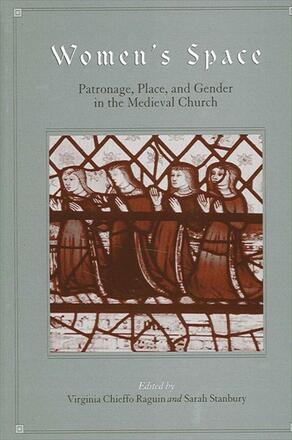
Women's Space
Patronage, Place, and Gender in the Medieval Church
Alternative formats available from:
Art historical and literary perspectives on the place of women in the medieval church.
Description
This interdisciplinary collection addresses the location of women and their bequests within the single most important public and social space in pre-Reformation Europe: the Roman Catholic Church. This innovative focus brings attention to gender and space as experienced in the medieval parish as well as in monastic and cathedral space. Through provocative handling of historical content and theory, the contributors explore strategies of exclusion and of inclusion and note patterns of later writers who neglect or rewrite records of female presence.
Essays on the York religious cycle, the chronicle of the monastery at Ely, and The Book of Margery Kempe explore how medieval writers used texts as fictive spaces on which to graft responses to the gendered uses of real church buildings. These text-based essays are juxtaposed with tightly focused archival research in art history and history on Florentine patronage and English parish seating, as well as with more broadly synthetic studies on access of women to shrines and on gendered left-right placement in ritual art.
Virginia Chieffo Raguin is Professor of Art History at the College of the Holy Cross. She is the author of many books, including The History of Stained Glass: The Art of Light Medieval to Contemporary and Stained Glass in Thirteenth-Century Burgundy. Sarah Stanbury is Associate Professor of English at the College of the Holy Cross. Her previous books include Seeing the Gawain-Poet: Description and the Act of Perception and Writing on the Body: Female Embodiment and Feminist Theory (coedited with Katie Conboy and Nadia Medina).
Reviews
"…a wide-ranging and thoughtful volume." — Medium Ævum
"The authors, largely American scholars, are very much aware of the provocations of recent scholarship and aim to consider conceptual challenges by anthropologists, geographers, and social theorists as to how we might understand space, place, and gender, and then how these concepts were moderated through patronage … The strongest essays focus either on theory or material and are precise as to how they are examining (and distinguishing between) space or place." — English Historical Review
"Everything in this volume is worth reading." — Journal of English and Germanic Philology
"This collection's interdisciplinarity, with essays by art historians, historians, and literary scholars, will make it useful to a variety of scholars working on gender issues in the Middle Ages." — Elizabeth Robertson, coeditor of Representing Rape in Medieval and Early Modern Literature
"The topic of gender and space in the Middle Ages, particularly women's relationships to the material spaces of religious practice, is original, and its investigation here produces very satisfying results." — Theresa Coletti, author of Mary Magdalene and the Drama of Saints: Theater, Gender, and Religion in Late Medieval England